When you start in eCommerce with either Shopify, Woocommerce or even BigCommerce you will be faced with a really important decision early on. Do you start with a general store, a niche store or a one product store?
In many cases your situation will determine which one you go with but if you are dropshipping then you truly can succeed with any one of the 3 options.
If you have your own product and you are transitioning from Amazon or Etsy then setting up a one product store is the obvious choice. If you have a product line then a niche store is more relevant.
If you are starting with no product of your own and you are dropshipping then you can pick any of the three options.
Because dropshipping makes you very nimble you can easily switch out products without risking thousands of dollars of inventory.
This makes a general store or a niche store very easy to operate.
If you found a product on Aliexpress that you absolutely love and that has a good sales record then you absolutely can build out a one product store from day one.
Each type of store has its own advantages and disadvantages. Spending a day or two to mull over the information below can save you a lot of drama further down the line.
In the end, you don’t want to overthink things. Getting started it much more important than getting it right.
Here’s a brief overview of the advantages and disadvantages of a one product store, a niche store and a general store for eCommerce and dropshipping.
1. A General Store
What is a General Store:
A general Shopify store is a store that sells any and everything. It’s similar to Walmart or Amazon where there is no real theme to the store. The store simply acts as a container for a multitude of products that target many different niches, products and audiences.

Examples of General Store:
When to use a General Store:
General stores used to be the go-to for almost all dropshippers. Filling a store with dozens of cool and quirky products from Aliexpress (at great prices) did extremely well.
By having dozens of products that appeal to a very large and broad audience you could easily generate sales from just getting general traffic to your store.
Because this worked so well, everyone started doing it. You can now head over to Fiverr and buy a store like this for less than $50 – completely set up and filled with “best selling” products.
Times have changed though. General stores are now seen as spammy – for the most part. However, there are still 2 great uses for general stores.
- If you already have a big audience:
If you already have a website or blog or Facebook group with a lot of traffic that appeals to a broad audience then driving traffic to a general store can work really well. Having a big email list can also work incredibly well with a general store.
Some of the biggest dropshipping sites do exactly this. They rely on untargeted traffic and they convert that traffic by having only products with “wow factor”. - You need a testing base:
It is no secret that finding “winning products” requires a lot of testing. Starting a new niche site or a new one product store every time you want to test a new product or idea can get very expensive and time consuming.
By having a general store where you can quickly list products and start a test is a really smart way to test quickly.
The Advantages of a General Store:
The main advantage of a general Shopify store is that you can quickly test products. Your entire store and everything is set up and you can quickly and easily test almost any product without trying to fit it into a niche.
You also spread your wings with a general store. Some products will start to stand out (depending on your traffic) as they constantly get clicked on or even start selling.
This can help to give you some direction for your online store.
The Disadvantages of a General Store:
General stores tend to come across as spammy. People trust it less and therefor conversion rates tend to be lower. Your AOV’s (average order values) tend to be lower too because people just buy general stuff and not much is related.
You will also have far less returning customers because you have no real brand loyalty since you are just selling a bunch of different and unrelated thighs.
A further disadvantage is if you are adverting on Facebook. Because you have no real defined audience, your Facebvook pixel will not optimize fully and you will most likely have to set up different pixels with an app like Trackify.
2.Niche Stores
What is a Niche Store:
A niche store is a store that is build around a specific niche market. This allows you to narrow your focus and appeal only to a very specific group of people.

A niche is a small segment of a bigger market. This can be quite broad like the dog niche or it can be very specific like the Pug dog niche.
In general, the more focussed your niche market the easier it is to make sales because you are targeting a very specific group of people with highly targeted products.
Niche stores are by far the most popular in eCommerce. It allows you to build a store with multiple products – without being a general store.
Examples of Niches Stores:
When to use a Niche Store:
If you started with a general store and found a few related products that looks promising in terms of sales then you can progress to a niche store.
If you have a particular niche that you have expertise in, that you know very well or that you love then a niche store will give you some starting advantage.
If you plan on generating traffic from SEO, then a niche store is by far your best option. It allows you to build out a lot of closely related products and rank them in Google using SEO. Google favours niche stores over general stores when it comes to SEO for eCommerce.
In general I would recommend you start with a niche store. It gives you much more opportunity with both free and paid traffic and being focussed on a specific niche will make product selections much easier.
Also, starting with something that you already know, like or are interested in makes it so much easier than having to do loads of niche research before you can even start.
The Advantages of a Niche Store:
A niche store greatly improves your chances of success. Because you are targeting a specific audience of buyers they are far more likely to buy something from your store.
Pug lovers may not like the dog bed you are selling but they will go crazy for the funny Pig t-shirts.
Niche sites is a great way to minimize the risk of failure. If you have a niche site and you can drive targeted traffic to it, you will start seeing conversions and sales.
This is something that you can not do with a general store because your products will be all over the place and not focused to a specific audience.
The Disadvantages of a Niche Store:
One of the big disadvantages of a niche store is the competition. Coming up with untapped niches is almost impossible. The most lucrative niches have fierce competition – especially in the dropshipping space.
More competition means your margins shrink and along with low profits come a lot more stress. Unless you can source your products for cheaper or source truly unique products it ends up being a shit fight.
One way to combat this problem is to not try to come up with a unique niche but rather come up with unique angles to existing niches.
An angle is a marketing term that refers to an underlying idea around a niche or product. Your angle is about how you approach a niche and what your “story” is behind the store. This helps you to narrow down your audience to something specific within that niche.
You can have a dog store with a family angle where its all about having pets around small kids. You can also have a dog store with the angle of problem pets that have behavioural issues.
3.One Product Store or Single Product Store
What is a One Product Store:
A one product store is a store that is built entirely around one product. This means that you usually have just 1 main product with maybe another 2 to 3 add-on products that can act as upsells or downsells.

One product stores often use sales funnels and rely on long form sales copy simply because the products tend to be higher ticket products.
Building a one product store around a $25 product is probably not worth it. Yes, you can create bundles and upsells but a $25 sale does not require much “selling”.
To sell a $100 product online you generally have to give people a lot more information and overcome a lot more friction before they will rip out their credit card.
Typically, one product stores need to be built around a concept or a story that you can tell through your store. People need to become emotionally invested in the product you are selling.
Examples of One Product Stores:
When to use a One Product Store:
When you have a product that is a proven winner in your general store or niche store, “peeling it off” and creating a one product store around it makes total sense. Most one product stores start off this way and it is a logical step forward from a niche or general store.
One of the most popular ways to use single product stores is to take popular winning products and breaking them out into a one product store – the advantages of this we will discuss shortly.
If you are developing your own product then a one product store is inevitable.
Single product stores is where the serious money is to be made. If you look at Snow and Blendjet, they both started as dropshipping stores and have since gone on to do multiple 8 figures each.
The Advantages of a One Product Store:
A one product store is all about branding and the perceived value of the product. You can find dozens of cheap UV lights on ebay, Amazon and a multitude of general dropshipping stores.

What Sterlize X has done is to take a generic dropshipping products and created a brand around it. They don’t even have their logo on the product and simply source a blank product from China.
Building a story around one product and dedicating a whole store to the product is much more in line with genuine niche products. It creates a very high perceived value and people are much more likely to buy from these stores because it looks utterly professional and like a legit brand.
Compare this to a blank product with a 2 paragraph product description in a general store and you can clearly see the difference.
Not only can you charge more, have higher conversion rates but you can build a very legit business that is worth something. Selling a general dropshipping store or even a niche dropshipping store is hard.
The perceived value is low because it has no higher value than just flipping products for some level of profit.
Potential buyers will be much more interested in buying a legit brand and they will easily fork out good money for it if you want to have an exit strategy.
The Disadvantages of a One Product Store:
The biggest disadvantage of a one product store is that it takes a lot of time and effort building a store like this. You will most likely have to order the product and produce your own photos and videos.
Everything has to be super high quality and everything from your logo to your copywriting needs to be high quality.
The risk with a one product store is always that it will flop. There is no guarantee that any product will work – even if it was a “winning product” elsewhere. This can leave you with nothing to show for all your time and money invested.
One product stores are also prone to be copied. There are some bad actors in the eCommerce space that have no problem copying stuff word for word.
I won’t go into too much detail but what I will say is that you need to pick your Chinese fulfillment agents very carefully. They have a lot of insight into your business and they can easily copy everything – and there are many reports of this happening lately.
Conclusion
You don’t have to be stuck with your choice of a one product store, a niche store or a general store. The golden rule of eCommerce is to Always Be Testing.
Some products will work well in one type of store while they will completely flop in another. There are so many minute variables that can affect the sales and conversions of a store or a product.
One example is the (now famous) Mosquito Trap X. It was a hot case study by a famous Youtuber. Since then a lot of (dumb) copycats have tried their luck and in the process killed the product.
If you did not know about that case study and the dozens (maybe even hundreds) of ripoffs then you would have been left scratching your head as to why it did not work.

Trust has become a big issue in online shopping. A lot of customers got burned with dropshippers from China and this has lead to a lot more cautious buying behaviour – especially on store that obviously look like dropshipping stores.
Many people have also now caught on to Aliexpress and Wish. You need to differentiate yourself by thinking more long term and building a store that is more branded and looks a lot more legit.
One big fallout from the COVID-19 pandemic is that online shopping is becoming more decentralized.
Yes, Amazon still holds the key to the castle but a lot of people are starting to prefer smaller more specialised stores that really understand their needs.
It is my opinion that people want to buy from people – not from big faceless corporations where you can never talk to anyone.
It is actually quite easy to differentiate yourself from the major eCommerce brands by simply being “real” and having a face and a voice to your store and your brand.